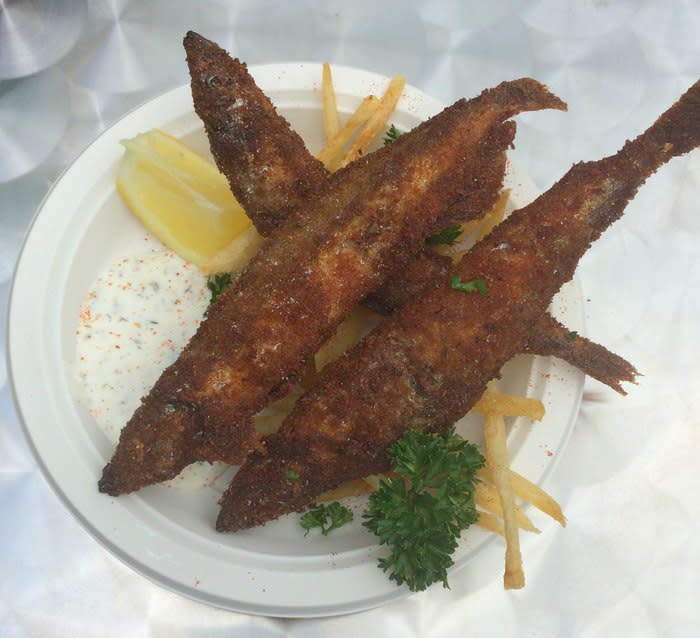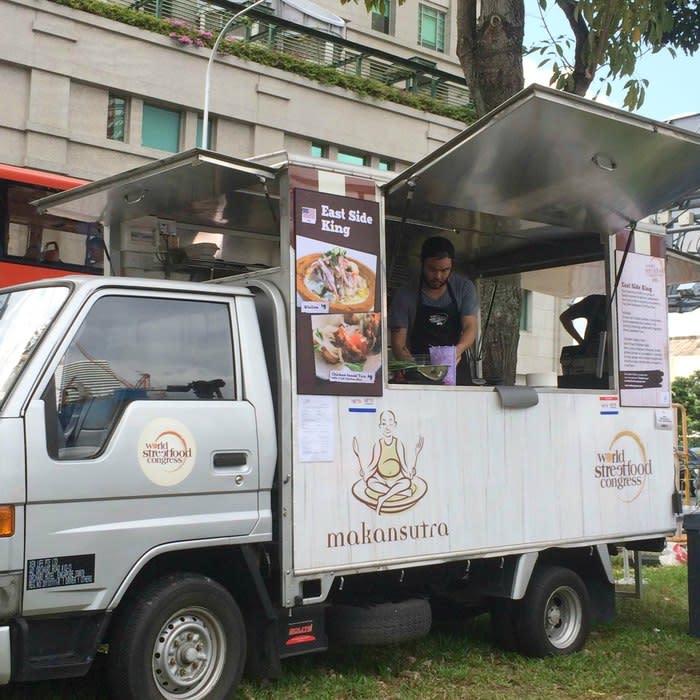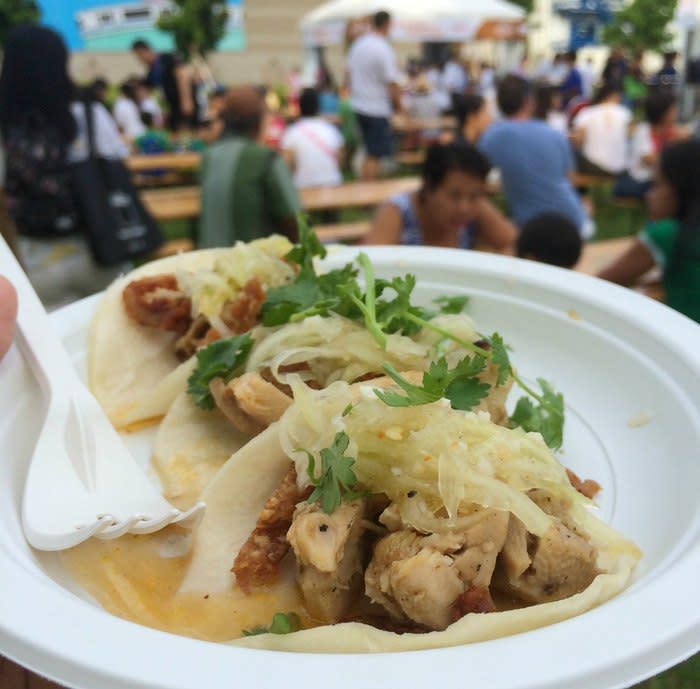Exploring the wide world of street food in Singapore
For the second time, Makansutra organized a world culinary event in Singapore, dubbed World Street Food Congress (WSFC), on April 8-12.
This year, the aforementioned Singapore-based company, which strives to celebrate street food culture worldwide, selected a centralized, easy-to-access area for the event — an open field in the busy Bugis area on Tan Quee Lan St.
Large white tents were assigned for live cooking demonstrations and Street Food Jamboree stalls. Next to them, another huge closed white tent was constructed, equipped with a stage, carpet and air conditioners for the Dialogue to take place.
Attending the event, my initial excitement was of course about visiting the 24 street food stalls from all over the world. There were American stalls, such as Churros Locos, with their famous churros served with ice creams and toppings, Bon Chovie (fried shisamo fish with fries), East Side King (food truck run by Chef Paul Qui, the winner of reality TV series Top Chef season 9), and stalls with foods from Bolivia, the Philippines, Vietnam, India and, of course, Indonesia.
Indeed the venue's atmosphere was full of joy as the sun went down and the temperature began to drop. Starting at 5 p.m., visitors flocked the venue. Long lines formed everywhere, with the sound of live music wafting through the air.
According to Makansutra's founder, K.F. Seetoh, on the first day alone, the event faced a “happy problem”, with food selling out before 9 p.m., two hours ahead of schedule.
I remembered myself feeling festive and fulfilled after finally getting a portion of Chef Paul Qui's Chicken Inasal Tacos and sitting down to eat it on a wooden bench.
However, after sitting and listening to the presentations of the speakers at the an event called the Dialogue, I started to feel even more content, with new and exciting ideas brimming around in my head.
The two-day Dialogue event, part of WSFC, brought food experts, scholars, restaurateurs and organizations advocating movements in the culinary industry together to discuss their ideas about street food culture.
KF Seetoh, who is also the founder of the World Street Food Congress, opened the Dialogue, emphasizing that it was time to go beyond creating awareness to preserving street food culture.
“It's time to empower, engage and enterprise," he said.
Among the speaker’s were Sean Basinski (director of Street Vendor Project from New York City, which provides legal representation and advocacy to immigrant vendors), Sangeeta Singh (Program Director of the National Association of Street Vendors of India [NASVI], which is an organization working for the protection of street vendors across India); and Indonesia's traditional food expert and celebrity chef, William Wongso.
The speaker discussed street food in terms of heritage, histories of migration, social class, culture, food fights and urbanism, among other topics.
In India, NASVI has helped support street food vendors while at the same time building a habit of food safety and hygiene for thousands of vendors, emphasizing the obtainment of two sanitation licenses.
Previously, India was similar to Indonesia, with weak oversight of sanitation and regular clashes with authorities. However, NASVI may have struck upon a model to be emulated.
"We started with smaller cities and worked our way up to the national scale," Sangeeta shared on NASVI's strategy.
Basinski, when asked how we can find the right form for our street food vendors -- whether centralized in hawker centers or organic and lively on the streets -- said that it was important to find the right balance between the two forms.
Basinski also suggested a union of street food vendors as another way to advocate legalization of the right to be on the street, and to enforce permit and licenses that could promote food hygiene and safety.
Despite questionable sanitation levels, street foods in Indonesia are embraced and loved as a source for affordable delicacies. This informal sector has, in the past, helped the country overcome the Asian financial crisis.
At the WSFC 2015, represented by four stalls of Soto Ayam Ambengan from Surabaya, Kupat Tahu Gempol, Gudeg Yu Nap from Bandung, and Taliwang chicken from Lombok, Indonesians demonstrated the rich variety of its heritage of street foods. The stalls were some of the event’s most well-loved.
According to Indonesia Stalls Coordinator Marchellinus Hanjaya, Gudeg Yu Nap, for example, sold over 600 portions during the fourth night of WSFC 2015.
"We got lots of feedback from our fellow vendors, especially those who had never been exposed to Indonesian foods. They said it was amazing how our four different stalls could deliver such a rich variety of flavors, but all were delicious and had a sense of familiarity to them,” said Marchell.
However, to turn our street foods into a national icon, the safety and hygiene of our comfort street foods must prioritized.
Closing this jolly culinary event, which achieved buzz on social media and attracted a huge number of visitors, KF Seetoh applauded the event for running smoothly.
Seetoh, who has great admiration towards Indonesian foods, said he was considering holding next year’s event in Jakarta.
Read also:
World Street Food Congress to grace Singapore on April 8-12
Will Meyrick's culinary journey: My top 5 street food favourites in Makassar








